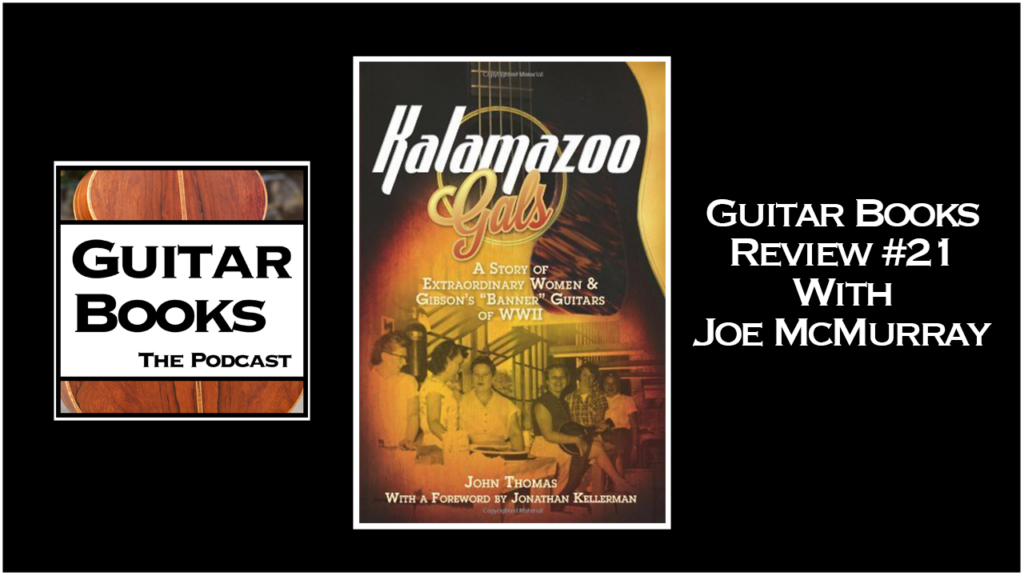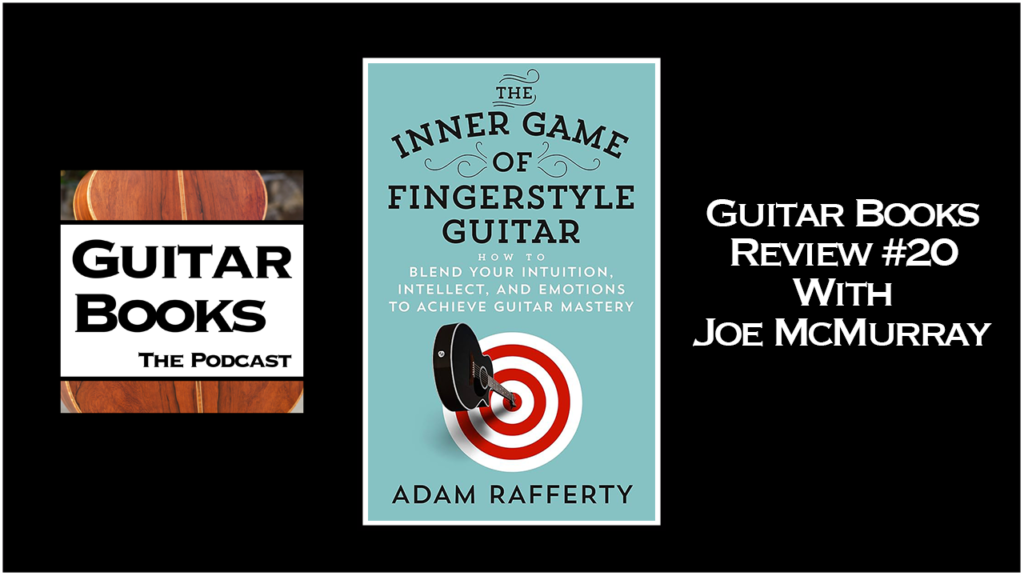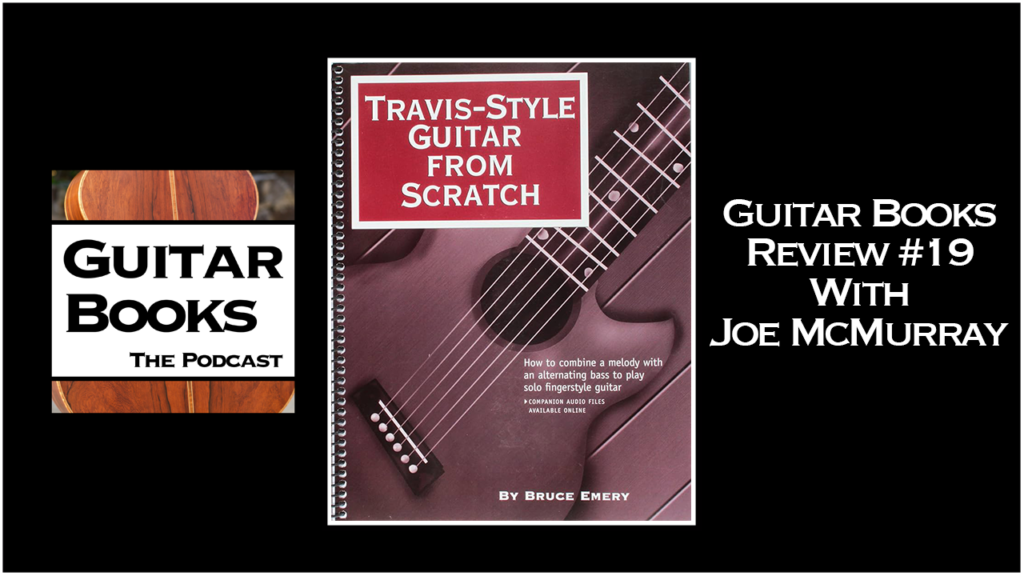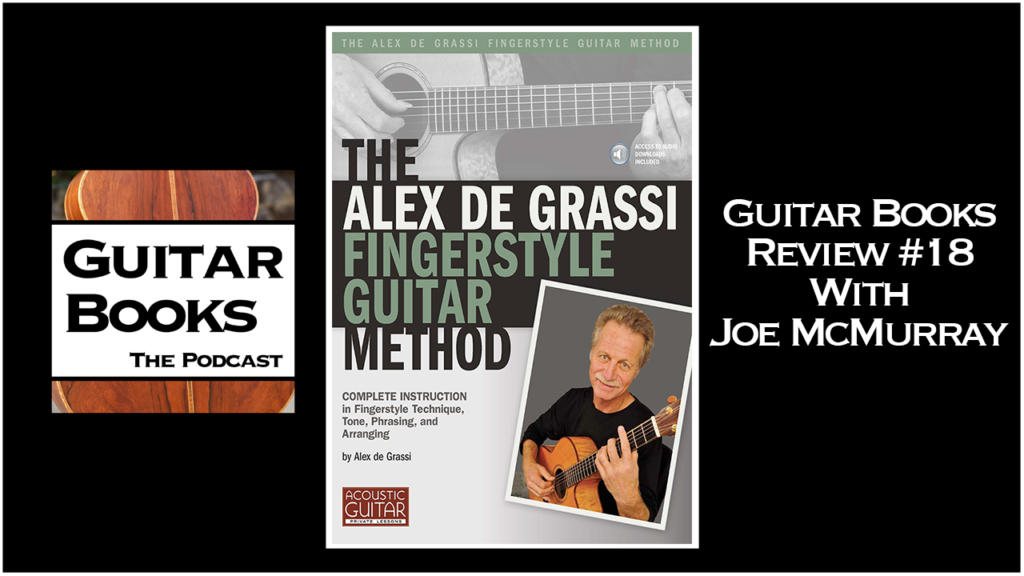Podcast: Play in new window | Download (Duration: 10:13 — 14.1MB) | Embed
Subscribe: Apple Podcasts | RSS | More

Is this one of the best or worst books for learning about vintage Gibson acoustic guitars?
Kalamazoo Gals by John Thomas is a great book for vintage guitar enthusiasts, anyone curious about why folks are so crazy about vintage guitars, anyone generally interested in the Gibson guitar company and its founding, and anyone interested in the culture and society of the U.S. home front during World War II. The author weaves the stories of the 1942 – 1945 Gibson “banner guitars,” the personal stories of the largely female workforce of the time, and the context of the wartime manufacturing regulations.
This book does NOT teach you how to play the guitar – it is non-fiction novel. John Thomas put a tremendous amount of research into this book, making multiple trips to Kalamazoo, MI (where the Gibson factory was located). He presents his findings with a sense of humor, making for an enjoyable read.
When many of the male employees at Gibson were sent off to fight in World War II, local women (the “Kalamazoo Gals”) stepped in to fill their shoes at the factory. Despite heavy wartime regulations and an inexperienced, largely female workforce, Gibson built some of its most revered guitars – the “Banner Gibsons.” Mysteriously, the Gibson company denies ever building these guitars!
John Thomas sought out the Kalamazoo Gals for their first-hand accounts of working at the Gibson factory during WWII, and along the way he discovered their personal stories. He poured through old shipping ledgers to decode Gibson’s strange serial numbers system (or lack there-of) so that we can more accurately date these vintage guitars. He X-rays a bunch of Banner Gibsons to discover exactly what made these guitars special. Finally, he produced a musical album to capture the sounds of the Banner Gibsons.
The early chapters of the book present the history of Orville Gibson and his founding of Gibson guitars in the late 1800s and early 1900s. As a guitar player, I was intrigued by the history of the company and how it is intertwined with American history. I had no idea that Orville Gibson was fond of gaudy pinstriped suits and built interesting instruments like harp guitars and lutes. I have a new respect for the company’s history having learned about how it scraped by during the depression, building both guitars and children’s toys, and how it aided the WWII effort by taking a bunch of contracts to build military weapons.
You will gain a much deeper understanding of Gibson’s flattop guitar models and their histories. You will read the stories of several specific guitars that were owned by famous musicians including Buddy Holly and Woodie Guthrie. You may develop an itch to acquire a vintage guitar – the massive, resonant sounds of these guitars and the stories they carry are truly special.
However, most importantly, you will hear the personal stories of some 15 or so Kalamazoo Gals. It is touching to follow along as John Thomas clearly develops meaningful relationships with these women throughout the course of his research and interviews.
Be sure to check out the album, The Light Still Burns, by Lauren Sheehan and produced by John Thomas, to hear some of the Banner Gibsons in action!
Published in 2012 by American History Press.
My eBook: Arranging for Fingerstyle Guitar: go to http://joemcmurray.com/checkout/ to purchase a pdf of my eBook. Learning to arrange melodies will also help your fingerstyle songwriting and your understanding of the inner workings of fingerstyle guitar.
My upcoming eBook on fingerstyle blues will be out soon! I’ll provide order details here.
My upcoming book, Arranging for Fingerstyle Ukulele, will be published by Mel Bay in 2025.
My music is available on all streaming platforms at https://open.spotify.com/artist/5dcokTG6C598OhTslHH5uo?si=hrQb7FViSZewDRSgECw9Ew:
Pins on the Map: my third fingerstyle guitar album was released on January 19, 2024. Watch the first single, “Open Road,” on YouTube here: https://youtu.be/uPBh8sZQsT4?si=EM_wAwnHFqU1VC9C.
Riding the Wave and Acoustic Oasis: my first two fingerstyle guitar albums.




